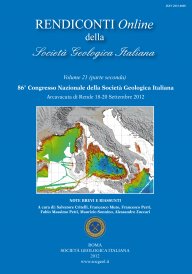
SINTACS method application for assessing the inherent vulnerability of the Venafro alluvial plain aquifer
Alberto Di Ludovico (*), Cuculo Fedele (**), Maria Vittoria Maiorano (*), Maria Pina Izzo (**), Annunziata Di Niro (**), Pasquale Coccaro (***) & Alfonso Scocca (*)
(*) ARPA Molise, Agenzia Regionale per la Protezione Ambientale.
(**) Autorità di Bacino Interregionale dei Fiumi Trigno, Biferno e Minori, Fortore e Saccione.
(***) Autorità di Bacino dei Fiumi Liri-Garigliano e Volturno.
Volume: 21/2012
Pages: 863-865
Abstract
As part of the monitoring and study of groundwater bodies, the assessment of the degree of aquifers intrinsic vulnerability plays a crucial role, since it represents a fundamental moment in the planning of the proper management of land and groundwater resources.
This study wants to propose the application of an analytical methodology in order to define the degree of vulnerability of Venafro alluvial plain aquifer, which plays a strategic role for the whole Molise Region, considering its geological and hydrogeological features and the importance of the socio-economic agricultural activity that takes place therein.
Among the various criteria developed in the field of vulnerability assessment of groundwater bodies, the choice fell on SINTACS method, applied with the procedure referred to in the GIS mapping overlays in order to allow modeling of the territory with the criterion of "finite element".
The SINTACS methodology, primarily developed since the 90s, has been applied to the Italian territory, obtaining a considerable success from the technical-scientific viewpoint: several research institutions tested it in experiments, finding a good correspondence with the Italian climatic and hydromorfologic dynamics. These results, together with the acquired knowledge about the reasons that determine the groundwater flow and the aquifer potential, allowed to draw a sufficiently comprehensive outline of the main critical factors of the territory, which is essential in the planning of protective actions and mitigation of water resources.
Keywords
Get Full Text